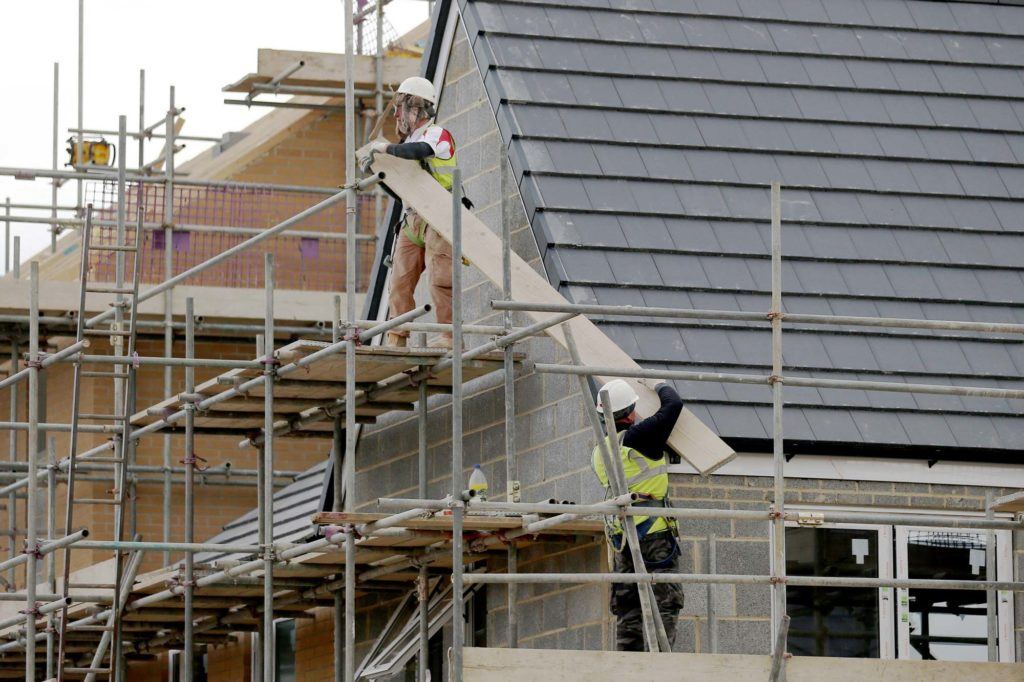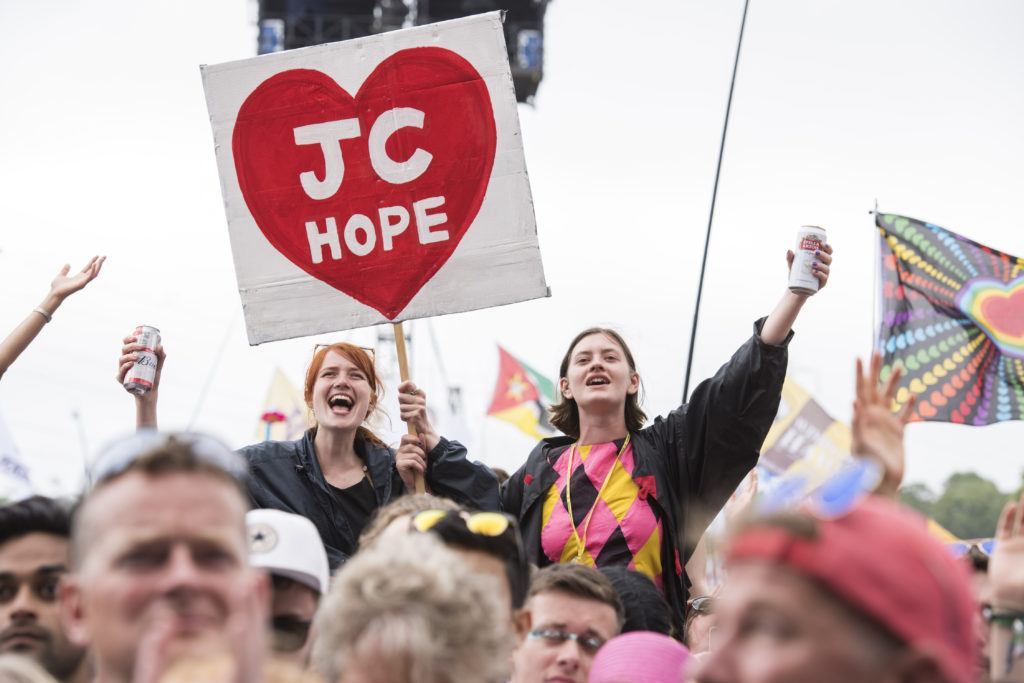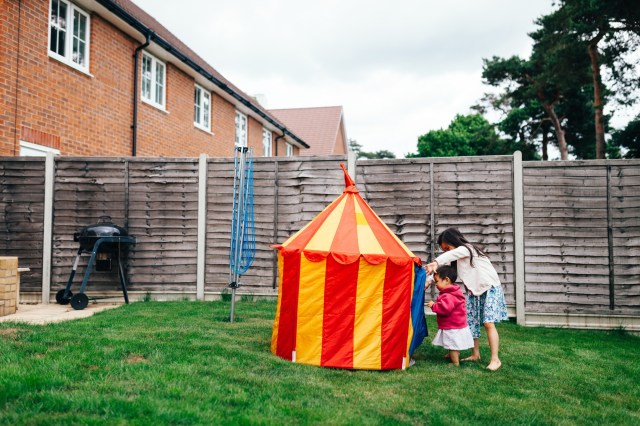Young couples are struggling to afford a home of their own, making starting a family more difficult. Credit: Oscar Wong/Getty Images

This is part two of “Home Truths”, Liam Halligan’s in-depth investigation of the UK housing crisis.
“It’s a constant concern,” says Whitney Joseph, as we drink tea in a bustling café on the outskirts of East London. “As each year passes, house prices are rising – I’m worried it’ll just get worse”.
“The average salary in the South East is around £34,000,” says her fiancé Aaron Senessie, “while the average house price is well over £400,000 – 11 or 12 times more”. Aaron looks at Whitney, then back at me. “Even applying jointly, no lender will give us a mortgage anywhere close to that,” he says. “We’re saving hard and have professional jobs – but still we have no chance”.
This is the plight of two successful, highly motivated graduates, both of whom earn good money. Whitney is a 27-year old trainee at a prestigious London law firm. Aaron is 28 and teaches mathematics at a leading secondary school. Together for several years, they are keen to get married and, while pursuing their careers, eventually start a family. “Our natural next step is to buy a home,” says Whitney, her frustration obvious. “We’re putting as much aside as we can each month, but there’s no hope – the housing market is failing ordinary people like us”.

To help her save, Whitney still lives with her parents. Aaron, meanwhile, rents a small bedroom in a shared house – lacking privacy and even the space for a proper desk to mark his pupils’ books. “We’re not after hand-outs or an extravagant property,” he says. “We’ve studied hard and we work hard – and now we desperately want, and feel we deserve, the opportunity to buy a place of our own”.
The story of Whitney and Aaron is the story of a generation – across not just the South East but large parts of the country. That’s because the UK house-building industry represents one of the most important failures of capitalism in Britain today. Such is the scale of the failure, in fact, and the extent of the economic and social fall-out, that it is provoking – for Whitney and Aaron’s generation – a crisis of confidence in “the system” itself.
In her October 2017 party conference speech, Theresa May spoke about the “British Dream” – a concept embracing home ownership and each generation being better off than the one before. Labour leader Jeremy Corbyn, too, while wanting more social housing to be built and owned by the state, has often argued that “everyone who works hard should be able to own their own home”.[1. See, for example, transcript of Prime Minister’s Questions 1 March 2017, jeremycorbyn.org.uk]
Home ownership in the UK peaked in 2005, as mentioned in Part I of Home Truths. Since then, the share of owner-occupier households has fallen from 70% to 63%, rising among pensioners, but dropping very sharply among every other age group. Some might say that declining home ownership does not matter – not least institutional investors increasingly backing the construction of apartment blocks entirely for rent. But that is by no means the view of the British public. Some 71% of those renting aspire to own their own home, as do 86% of the population as a whole.[3. See ‘CML Research shows 80% of people aspire to own a home in ten years’, 20 October 2016; British Social Attitudes Survey 28, ‘Chapter 8 Housing’, 2012] With home ownership now below two-thirds and falling, that suggests a large slice of the population – and a majority across several age groups – wants to buy, but, like Whitney and Aaron, face the locked door of unaffordability.
Right to buy
This desire to own should not be surprising. Buying a home is, for millions, an important ambition and right-of-passage, as well as a strong incentive to gain skills, work hard and live responsible lives. Being an owner-occupier has traditionally given ordinary working people, even those on modest incomes, a chance to accumulate capital, providing them with more control over their lives and a tangible ‘stake’ in the economy. As such, broad home-ownership, makes societies more stable and productive – and less prone to populism.
Renting is now far more expensive than owner-occupancy, particularly for young adults – who, on average, spend almost 30% of their monthly disposable incomes on rent, around half the share of those repaying mortgage interest. Owner-occupancy frees families from the inherent insecurity of tenancy agreements, while encouraging them to maintain and invest in their properties – which benefits the broader economy. And those paying-off their own home loans, rather than paying rent ‘down the drain’ to service their landlord’s mortgage, will ultimately benefit from tax-free capital gains and outright ownership of a valuable asset.
The UK’s chronic home shortage, though, means millions of young adults are now priced out of the housing market altogether – unable to rent or buy. One sad result is that more young adults are not leaving their childhood home. The number of 20-34 year olds living with their parents is up 28% since 2006, to 3.4 million according to ONS data – including 20% of women in that age range and an astonishing 32% of men.
In addition to single adults living with their parents, this housing affordability crisis has driven up the number of “concealed households”. Internal government estimates indicate that the number of couples (with or without children) living within another household has increased 50% since 2006, to 2.5 million. Homeless family units living within other households in London are up an incredible 80% over the last decade, to an estimated 720,000.[4. Internal Ministry of Housing Communities and Local Government memo obtained by author. These estimates are based on Labour Force Survey data.]
Despite spending more than previous generations on housing, today’s young adults also have to endure longer commutes to work if they want to buy – as high house prices push them further away from city centres. In total there are now 3.3 million workers with daily commutes exceeding two-hours one way, some 34% more than in 2007.[ 4. John Evan, ‘Calling time on long commutes’, Trades’ Union Congress, November 2017] As people move to less central locations, in a bid to buy an affordable home, resulting longer journeys not only lower productivity but also negatively impact family life and general wellbeing.
And, of course, as prices spiral way ahead of wages, ever-more young adults – including those holding down professional jobs – need financial help from their family to buy their first property. This is one of the major property market trends of our time. Around half of all first-time buyers (FTBs) now rely to some extent on “the bank of Mum and Dad”, rising to two-thirds in London and the South East.
In 2017, family and friends contributed an estimated £6.5 billion to help FTBs, 30% up on the previous year, supporting almost 300,000 transactions.[6. Legal and General, ‘The Bank of Mum and Dad Report’, August 2017] With mortgage rates still close to record lows, few struggle to make the monthly repayments once, with family assistance, they have bought their own home. The big obstacle is the deposit – with 70% of those who received parental help admitting they would otherwise still be renting.
Such assistance is, of course, only available to those from relatively wealthy backgrounds. This lays bare an uncomfortable truth – the growing gulf between Britain’s “property haves” and “property have-nots”. The UK housing market, traditionally a source of social mobility and financial security, is now fuelling social immobility and resentment. This goes a long way towards explaining the surge of support for Jeremy Corbyn in the June 2017 UK general election.
Youthquake?
At the May 2015 general election, David Cameron’s Conservatives gained 36% of votes among 30–39 year olds, compared to 34% for Ed Miliband’s Labour. In June 2017, that position was transformed. Corbyn took 55% of votes within the same age range, while Theresa May’s Conservatives won just 29%.
Some young voters angry about Brexit clearly wanted to punish the Tories – even though the Labour manifesto also pledged to honour the referendum result. But the housing affordability crisis also worsened after 2015, and was far more widely discussed. With even high-achieving professionals often unable to buy their own home, a growing number of young voters began to conclude that capitalism is unfair – a theme featuring prominently in Corbyn’s campaign. And just as owner-occupiers are more likely to vote Conservative, young adults desperately upset they can’t buy a home are increasingly prone to vote for a politician offering to “shake things up”.

The reality is that broad and largely accessible UK home ownership has, for many decades, guarded against an unhealthy and potentially extremely destabilising concentration of wealth. Yet this long-standing feature of British society, a natural corrective, is now going into reverse. While some inequality is inevitable and even desirable under capitalism, as the recent UnHerd audio documentary explored, the distribution of wealth across the UK has become far more skewed over recent years.
In June 2017, the Resolution Foundation estimated that the wealthiest 10% of UK adults now own half of Britain’s wealth, with the richest 1% controlling no less than 14% – 15%, in contrast, have no or negative wealth.[7. ‘Britain’s increasingly unevenly shared property wealth is driving up inequality after a decade-long fall’, Resolution Foundation, June 2017] And while wealth inequality fell during the decade from 1995 to 2005, it has since risen steadily, not least since the 2008 global financial crisis.
While total wealth across Britain – not just housing, but also private pensions, shares, land and other physical objects – has risen from £9,900bn in 2007 to £11,100bn now, the wealth of the typical ‘median’ adult, lying exactly in the middle of the distribution, has dropped – from £99,000 just before the financial crisis to £84,000. And this fall in large part reflects the changing distribution of property ownership, linked in turn to the inability of increasing numbers of young and middle-aged adults to buy their own home.
House prices have almost doubled since 2008, while wages have barely risen – with the majority of successive generations of young people now priced-out, their families increasingly being forced into a life of private renting. While the number of homes purchased by people aged 25 to 44 with a mortgage dropped by over 1.6 million over the last decade, the number of homes owned outright by those above 65 has increased more than 1.4 million.
Falling UK home ownership among young adults, then, continuing as they move into middle age, has become a source of inter-generational conflict.
Economic drag
Fifteen years ago, in her detailed review of the housing market, Kate Barker wrote that a failure to increase house building would lead to “problems of homelessness, affordability and social division, decline in standards of public service delivery and increasing the costs of doing business in the UK – hampering our economic success”.[8. Kate Barker, ‘Review of House Supply – Delivering Stability: Securing our Future Housing Needs’ HM Treasury, 2004] The undersupply of housing clearly contributes to national economic stultification – with far too high a share of savings channeled into housing rather than more productive assets. While longer commutes harm productivity, high rental and property prices also hinder the ability of firms to attract workers to the industrial, tech and service-sector clusters vital for future UK innovation and growth – not just in London and its outskirts, but across smaller cities too.[9. Sabah Meddings, ‘Oxbridge blues: tech hubs bursting at the seams’, The Times, 3 September 2017]
What is most galling, though, is that the UK’s lack of homes is a cruel limitation on the aspirations of hard-working young people who want to settle down and form family units while owning their own property – people like Whitney Joseph and Aaron Senessie. “It’s an uphill struggle – we’re saving as much as we can, but always battling rising prices,” Aaron tells me. “It’s actually really upsetting – and constantly on my mind,” Whitney continues. “However hard we try, the market keeps pulling away from us”.
Since Labour came within a whisker of power, the Government has become alive to the reality that millions of voters in their 30s and 40s who should be natural Tory-voting property owners are instead unhappily renting or living with their parents, and are prepared to vote for Corbyn. As such, ministers have been talking a great deal lately about the importance of home-ownership, while making solemn declarations about their determination to “fix the UK’s broken housing market”.
The following part of this series considers the nine crony capitalist characteristics that have driven the housing crisis.
Part four, examining the government’s response to the crisis, will be published tomorrow. The fifth and final part will present Liam’s manifesto for radical reform.










Join the discussion
Join like minded readers that support our journalism by becoming a paid subscriber
To join the discussion in the comments, become a paid subscriber.
Join like minded readers that support our journalism, read unlimited articles and enjoy other subscriber-only benefits.
Subscribe